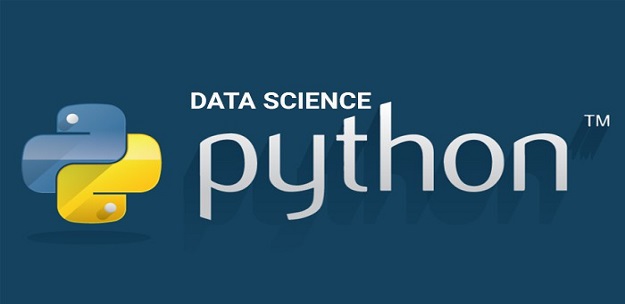Python Certification Training for Data Science
Price$499

Overview
Python programming certification course enables you to learn Python from scratch. This Python Course will also help you master important Python programming concepts such as data operations, file operations, object-oriented programming and various Python libraries such as Pandas, Numpy, Matplotlib which are essential for Data Science. Pinnacledu’s Python Certification Training course is also a gateway towards your Data Science career.
Section 1Introduction to Python
Lecture 1Overview of Python
Lecture 2The Companies using Python
Lecture 3Different Applications where Python is used
Lecture 4Discuss Python Scripts on UNIX/Windows
Lecture 5 Values, Types, Variables
Lecture 6 Operands and Expressions
Lecture 7 Conditional Statements
Lecture 8Loops
Lecture 9Command Line Arguments
Lecture 10 Writing to the screen
Section 2 Sequences and File Operations
Lecture 11 Python files I/O Functions
Lecture 12 Numbers
Lecture 13Strings and related operations
Lecture 14 Tuples and related operations
Lecture 15 Lists and related operations
Lecture 16Dictionaries and related operations
Lecture 17Sets and related operations
Section 3 Deep Dive – Functions, OOPs, Modules, Errors and Exceptions
Lecture 18 Functions
Lecture 19 Function Parameters
Lecture 20Global Variables
Lecture 21Variable Scope and Returning Values
Lecture 22 Lambda Functions
Lecture 23 Object-Oriented Concepts
Lecture 24 Standard Libraries
Lecture 25 Modules Used in Python
Lecture 26The Import Statements
Lecture 27Module Search Path
Lecture 28Package Installation Ways
Lecture 29 Errors and Exception Handling
Lecture 30Handling Multiple Exceptions
Section 4 Introduction to NumPy, Pandas and Matplotlib
Lecture 31 NumPy – arrays
Lecture 32 Operations on arrays
Lecture 33 Indexing slicing and iterating
Lecture 34 Reading and writing arrays on files
Lecture 35Pandas – data structures & index operations
Lecture 36Reading and Writing data from Excel/CSV formats into Pandas
Lecture 37 matplotlib library
Lecture 38 Grids, axes, plots
Lecture 39 Markers, colours, fonts and styling
Lecture 40Types of plots – bar graphs, pie charts, histograms
Lecture 41 Contour plots
Section 5Data Manipulation
Lecture 42Basic Functionalities of a data object
Lecture 43Merging of Data objects
Lecture 44 Concatenation of data objects
Lecture 45 Types of Joins on data objects
Lecture 46 Exploring a Dataset
Lecture 47 Analysing a dataset
Section 6 Introduction to Machine Learning with Python
Lecture 48Python Revision (numpy, Pandas, scikit learn, matplotlib)
Lecture 49What is Machine Learning?
Lecture 50 Machine Learning Use-Cases
Lecture 51 Machine Learning Process Flow
Lecture 52Machine Learning Categories
Lecture 53 Linear regression
Lecture 54Gradient descent
Section 7Supervised Learning - I
Lecture 55 What are Classification and its use cases?
Lecture 56What is Decision Tree?
Lecture 57Algorithm for Decision Tree Induction
Lecture 58 Creating a Perfect Decision Tree
Lecture 59Confusion Matrix
Lecture 60 What is Random Forest?
Section 8Dimensionality Reduction
Lecture 61 Introduction to Dimensionality
Lecture 62 Why Dimensionality Reduction
Lecture 63 PCA
Lecture 64Factor Analysis
Lecture 65Scaling dimensional model
Lecture 66 LDA
Section 9Supervised Learning - II
Lecture 67What is Naïve Bayes?
Lecture 68How Naïve Bayes works?
Lecture 69Implementing Naïve Bayes Classifier
Lecture 70 What is Support Vector Machine?
Lecture 71Illustrate how Support Vector Machine works?
Lecture 72 Hyperparameter Optimization
Lecture 73 Grid Search vs Random Search
Lecture 74 Implementation of Support Vector Machine for Classification
Section 10Unsupervised Learning
Lecture 75What is Clustering & its Use Cases?
Lecture 76What is K-means Clustering?
Lecture 77 How does K-means algorithm work?
Lecture 78 How to do optimal clustering
Lecture 79 What is C-means Clustering?
Lecture 80 What is Hierarchical Clustering?
Lecture 81How Hierarchical Clustering works?
Section 11Association Rules Mining and Recommendation Systems
Lecture 82What are Association Rules?
Lecture 83Association Rule Parameters
Lecture 84 Calculating Association Rule Parameters
Lecture 85Recommendation Engines
Lecture 86 How does Recommendation Engines work?
Lecture 87 Collaborative Filtering
Lecture 88 Content-Based Filtering
Section 12 Reinforcement Learning
Lecture 89 What is Reinforcement Learning
Lecture 90 Why Reinforcement Learning
Lecture 91 Elements of Reinforcement Learning
Lecture 92Exploration vs Exploitation dilemma
Lecture 93 Epsilon Greedy Algorithm
Lecture 94 Markov Decision Process (MDP)
Lecture 95 Q values and V values
Lecture 96Q – Learning
Lecture 97 α values
Section 13Time Series Analysis
Lecture 98What is Time Series Analysis?
Lecture 99Importance of TSA
Lecture 100Components of TSA
Lecture 101White Noise
Lecture 102 AR model
Lecture 103MA model
Lecture 104ARMA model
Lecture 105ARIMA model
Lecture 106Stationarity
Lecture 107ACF & PACF
Section 14Model Selection and Boosting
Lecture 108 What is Model Selection?
Lecture 109 The need for Model Selection
Lecture 110Cross-Validation
Lecture 111 What is Boosting?
Lecture 112 How Boosting Algorithms work?
Lecture 113 Types of Boosting Algorithms
Lecture 114 Adaptive Boosting



